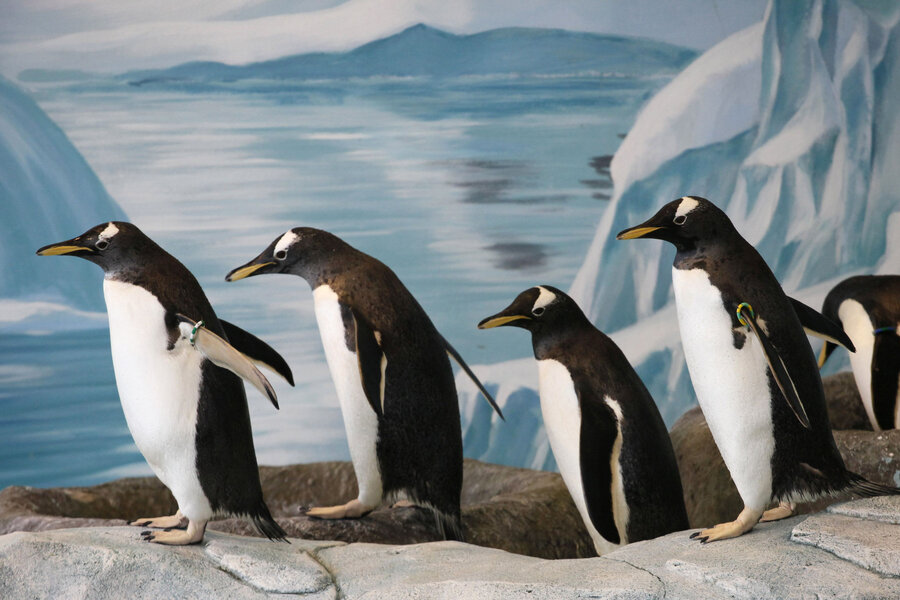How penguins could inspire safer planes
Loading...
A bird that doesn't fly may one day help airplanes fly more safely.
That's thanks to researchers at the University of California, Los Angeles (UCLA) studying how airplanes may learn de-icing secrets from penguins, who survive forays into frigid waters and across icy landmasses without becoming living popsicles thanks to their ultra ice- and water-repellent feathers.
Temperatures in Antarctica can nosedive to -135.8 degrees Fahrenheit, and wind speeds can reach nearly 90 miles per hour – conditions far more extreme than most commercial aircraft will ever experience. Yet penguins on the coldest continent don't ice over, a problem planes in cold climes consistently confront and one that can lead to loss of control and even accidents.
"We found the penguin feathers to be superhydrophobic meaning they are extremely water repellent," Pirouz Kavehpour, professor of mechanical and aerospace engineering at UCLA and a co-author of the research, told The Huffington Post. "We believe there are lessons we can learn from the structure of penguin feathers to design effective anti-icing surfaces for aircraft wings, power lines, and many other applications of significance."
Professor Kavehpour first got interested in penguin feathers while watching a nature documentary.
“I noticed the penguins were coming out of very cold water, and sitting in very cold temperatures, and it was curious that no ice formed on their feathers,” Kavehpour said in a statement.
So he contacted penguin expert Judy St. Leger, and together they analyzed penguin feathers donated by SeaWorld San Diego under a scanning electron microscope.
Their examination revealed two characteristics that enable the flightless birds to withstand extreme temperatures and moisture without icing over.
First, the penguin feathers had a hydrophobic coating of oil, applied from a gland near the base of the penguin's tail, that makes them incredibly water repellent.
Their feathers also had tiny pores that trap air, making them extremely effective at repelling water and preventing ice formation. That's because once a drop of water hits a surface protected both by a coating of oil and tiny pores, it takes on a spherical shape and the beads of water can roll off or be shaken away. What's more, when water beads up and takes on a spherical shape, it makes less contact with the surface, therefore delaying ice formation.
The researchers examined the feathers of both gentoo penguins – which live in Antarctica and the southernmost parts of South America – and those of Magellanic penguins – which live in warmer climates in Chile, Argentina, and even Brazil. They found only the gentoo penguins – who must survive colder climes – have the small pores, and they also use a more water-repellent oil.
Penguins' anti-icing solutions may hold valuable lessons for planes.
Icing on airplane wings, flaps, and rudders, changes the airflow around a plane and can diminish the lift force that keeps a plane aloft. In severe cases, icing can cause a temporary loss of control and even accidents. Between 1995 and 2000, about 8 percent of airline accidents were caused by the effects of icing, according to the National Oceanic and Atmospheric Administration.
While there's more research to be done about how penguins may specifically inspire safer planes, researchers have posited that future planes may have pitted surfaces and lubricants to prevent ice formation.
"Airlines spend lots of time and money applying chemical de-icers to planes that fly in winter weather," the researchers said in a statement. "Superhydrophobic surfaces inspired by penguins might be cheaper, longer-lasting, and more environmentally-friendly."








